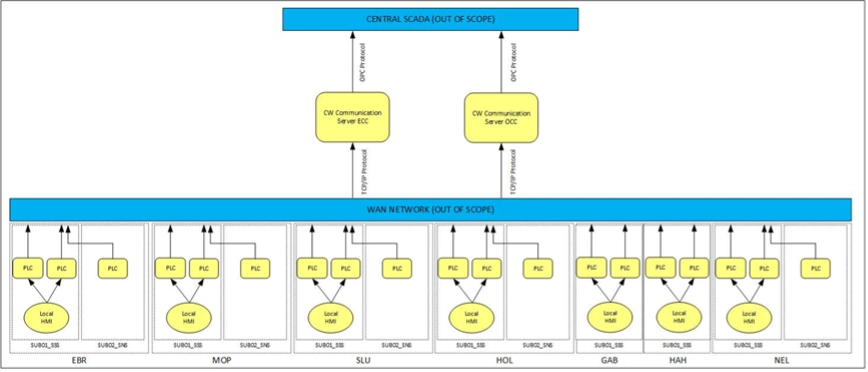The Project Scope for AS Hellas
The project scope for AS Hellas included the following:
- Study, design, and construction of the 42 automation panels (SSS, SNS, RIO, LCP) for the 5 new stations and 2 new shafts in the Copenhagen Metro expansion project.
- Software development (compliant with EN 50128 standards) for the automation system of each station, controlling subsystems such as:
- Emergency Ventilation System
- Fire Alarm System
- Fire Fighting System
- Drainage System
- Flood Gates
- Low Voltage System
- HVAC
- Lighting System (DALI)
- Lifts & Escalators
- Network
- Development and implementation of the communication interface between the SCADA systems in the new stations and shafts and the existing Central SCADA System, which was initially provided by another company.
- Quality Documentation for delivered equipment and software (NOM, HMI Specifications, EN50128 docs, O&M, Training material, Activity sheets, Spare part lists, Asset lists)
- Project auxiliary documentation (Shop drawings)
- Tests Documentation for delivered equipment and software (FAT, ITP, WIR, COM, SAT, SIT)
- Commissioning
The software focus primarily involves the Building Management System (BMS) of the stations. However, specific safety specifications required industrial automation hardware. The result is a system that effectively combines the advantages of Industrial and Building Automation.
A project spanning 3.5 years, demanding exceptional project management skills, documentation, and strict adherence to the project schedule and specifications.
Additions to the Project
Throughout the project, three additional sub-projects were assigned to AS HELLAS related to equipment automation not provided by the main suppliers of the consortium. Specifically, automation systems were requested for the Skylights equipment, the DALI system for public lighting, and the central fire fighting pump station.
Especially the DALI system, which was implemented by AS HELLAS for the first time in the Copenhagen Metro project, left a particularly positive impression on the client.
Implementation
The study and construction of the SCADA panels were based on strict specifications, and aligned with the most rigorous construction standards for relevant automation panels.
The architecture of the automation system is based on seven autonomous stations with redundant PLCs, each controlling subsystem installed locally, according to the operation scenarios of the already existing central SCADA system. Each station communicates separately with the central SCADA system of the Copenhagen METRO, as shown below, exchanging commands and information in real-time.

The project’s total control points, exceeding 6,500, are categorized based on their security level (SIL).
AS Hellas successfully completed the commissioning of all systems under their scope on time, prior to start of Metro operations without any deviations from the schedule. The commissioning process required the on-site continuous presence of a large team of our engineers over a six-months period.
Key elements of the project:
The successful completion of the project is a significant achievement for AS Hellas, as it involved handling a demanding project with strict timelines and several distinctive features, outlined below:
- The first assignment of a large and demanding infrastructure project in a Northern European country.
- The development of SIL software, according to the EN50128 standard, was required for the first time.
- The volume of documentation surpassed 10,000 pages, an unprecedented scale.
- This marks the first instance where our presence was required for commissioning in a foreign country for an extended and continuous period (6 months).
- Additionally, it was the first time that the presence of a large team was necessary for commissioning in a foreign country simultaneously (2 months).